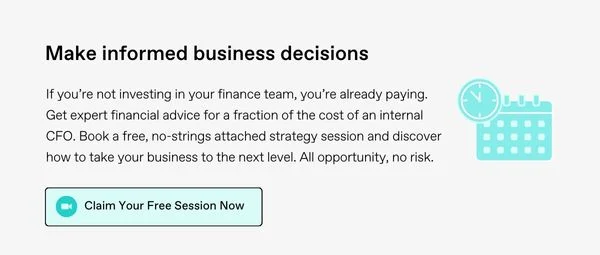Are You Self-Harming in Business?
Running a business comes with its challenges, but inadvertently limiting your own growth or success could be one way you’re making it harder for yourself. That may sound dramatic, but it’s a scenario we’ve seen before, and it means someone is self-harming in business.
What is Self-Harming in Business?
Business self-harm refers to deliberate actions or inactions that impede growth, acting as a roadblock to success. The most common form of business self-harm we see is when a business has ample demand and opportunity for their products or services, yet lacks the capacity to fulfill it. Unintentionally, this hinders business growth and potentially even leaves money on the table.
To illustrate with a real-life example, a business leader we know freely admitted he wasn’t returning prospects’ calls, neglected new clients and wasn’t communicating capacity issues to the rest of his team. As a result of these internal constraints, he was missing out on opportunities that could have grown his business by 40-50% almost immediately. This scenario exemplifies self-sabotage, which in essence is self-harming in business.
Another form of business self-harm comes from financial constraints. Imagine having a golden opportunity within reach, but you lack the cash flow to seize it. This is a financial capacity issue, and is where a conversation with your bank might become essential.

Breaking Free from Self-Harm: A 3-Step Approach
If you’re in a situation where you have more opportunities than you can handle, here’s what to do.
Step 1: Identify Constraints & Necessary Investments
To overcome self-harm, start by identifying any areas you may be self-sabotaging or unintentionally closing the door on business growth. Then, consider what you’d need to open that door. It could be hiring new team members, expanding your workspace, or exploring new financial avenues.
The key is to understand the costs associated with these changes. Some are easier and less costly, such as recruiting. Some are more difficult, such as investing in a new warehouse, which would significantly increase your break-even and running costs.

Step 2: Weighing Opportunity vs. Risk
Once you understand what your outlay is, the next step is considering the size of the opportunity. Every investment comes with both opportunities and risks, and it’s important to balance the two.
For instance, doubling your business space may increase your monthly rent by $20K, but if it significantly boosts your gross profit by $150K per month, that’s a low-risk circumstance certainly worth taking. If that investment only came with a $25K per month GP increase, however, that’s another story. And even more substantially, what if you made the outlay and subsequently made no extra money, where would that leave your business?

Step 3: Make Projections Confidently
Lastly, confidence in your projections is paramount. While you don’t want to think worst-case-scenario, it is important to consider how any investment will impact each area of your business. Here’s where the expertise of a financial advisor is useful, especially if you don’t have an internal CFO on your team.
For example, we’ve encountered scenarios where we advised against a property expansion due to unfavourable market conditions, substantial overhead increases and a limited financial pay-off. On the flip side, there have been instances where we’ve strongly recommended a strategic move to seize an opportunity and propel the business forward.
How to Unlock Business Potential
To overcome self-harm in business, ask yourself this: If you had abundant financial resources and no fear of failure, what constraints would you release in your business? Consider the potential opportunities, assess associated costs, and gauge the likelihood of success.
This exercise unveils the untapped potential within your business and provides a roadmap to successful growth, ensuring your enterprise thrives with informed and empowered decision-making.
Learn everything we teach our clients, free
Join 400+ business owners & leaders who receive practical business & accounting tips, delivered free to your inbox every week. No fluff, just high-level expertise. Sign up now.




